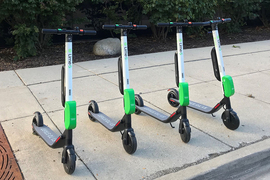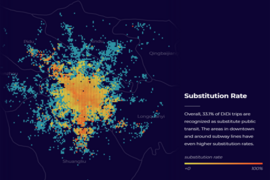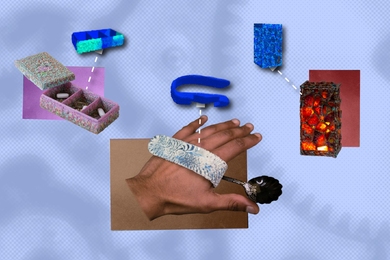Transport network companies (TNCs), or ride-sharing companies, have gained widespread popularity across much of the world, with more and more cities adopting the phenomenon. While ride-sharing has been credited with being more environmentally friendly than taxis and private vehicles, is that really the case today, or do they rather contribute to urban congestion?
Researchers at the Future Urban Mobility (FM) Interdisciplinary Research Group (IRG) at Singapore-MIT Alliance for Research and Technology (SMART), MIT, and Tongji University conducted a study to find out.
In a paper titled “Impacts of transportation network companies on urban mobility” recently published in Nature Sustainability, the first-of-its-kind study assessed three aspects of how ride-sharing (more accurately called ride-hailing) impacts urban mobility in the United States — road congestion, public transport ridership, and private vehicle ownership — and how they have evolved over time.
“While public transportation provides high-efficiency shared services, it can only accommodate a small portion of commuters, as their coverage is limited in most places,” says Jinhua Zhao, SMART FM principal investigator and associate professor at MIT Department of Urban Studies and Planning. “While mathematical models in prior studies showed that the potential benefit of on-demand shared mobility could be tremendous, our study suggests that translating this potential into actual gains is much more complicated in the real world.”
Using a panel dataset covering mobility trends, socio-demographic changes, and TNC entry at the metropolitan statistical areas level to construct a set of fixed-effect panel models, the researchers found the entrance of TNCs led to increased road congestion in terms of both intensity and duration. Specifically, they noted that congestion increased by almost 1 percent while the duration of congestion rose by 4.5 percent. They also found a 8.9 percent drop in public transport ridership and an insignificant decrease of only 1 percent in private vehicle ownership.
While many previous studies have focused on Uber alone, this study takes into account both Uber and Lyft — the two most popular ride-sharing companies in the United States. While Uber accounts for 69 percent of the market, Lyft accounts for a significant 29 percent, and its inclusion into the dataset would give a more holistic and unbiased estimate of the TNC effect.
The study also finds easy access to ride-sharing discourages commuters from taking greener alternatives, such as walking or public transportation. Survey data from various U.S. cities also showed that approximately half of TNC trips would otherwise have been made by walking, cycling, public transport, or would not have been made at all.
“We are still in the early stages of TNCs and we are likely to see many changes in how these ride-sharing businesses operate,” says Hui Kong, SMART-FM alumna and postdoc at the MIT Urban Mobility Lab, and an author of the paper. “Our research shows that over time TNCs have intensified urban transport challenges and road congestion in the United States, mainly through the extended duration and slightly through the increased intensity. With this information, policies can then be introduced that could lead to positive changes.”
The researchers think that the substantial deadheading miles (miles traveled without a passenger) by TNCs could contribute to the TNC’s negative impact on road congestion. According to some other studies, approximately 40.8 percent of TNC miles are deadheading miles.
“Our findings can provide useful insights into the role that TNCs have played in urban transport systems,” says Professor Mi Diao of Tongji University and SMART-FM alumnus, who is the lead author of the paper. “It can be very useful in supporting transportation planners and policymakers in their decisions and regulations with regard to TNCs.”
The research is carried out by SMART and supported by the National Research Foundation (NRF) Singapore under its Campus for Research Excellence And Technological Enterprise (CREATE) program.
FM is one of five IRGs in SMART. FM harnesses new technological and institutional innovations to create the next generation of urban mobility systems to increase accessibility, equity, safety, and environmental performance for the citizens and businesses of Singapore and other metropolitan areas, worldwide.
SMART is MIT’s research enterprise in Singapore, established in partnership with the NRF in 2007. SMART is the first entity in the CREATE. SMART serves as an intellectual and innovation hub for research interactions between MIT and Singapore, undertaking cutting-edge research projects in areas of interest to both Singapore and MIT. SMART currently comprises an Innovation Center and five IRGs: Antimicrobial Resistance, Critical Analytics for Manufacturing Personalized-Medicine, Disruptive and Sustainable Technologies for Agricultural Precision, FM, and Low Energy Electronic Systems.









